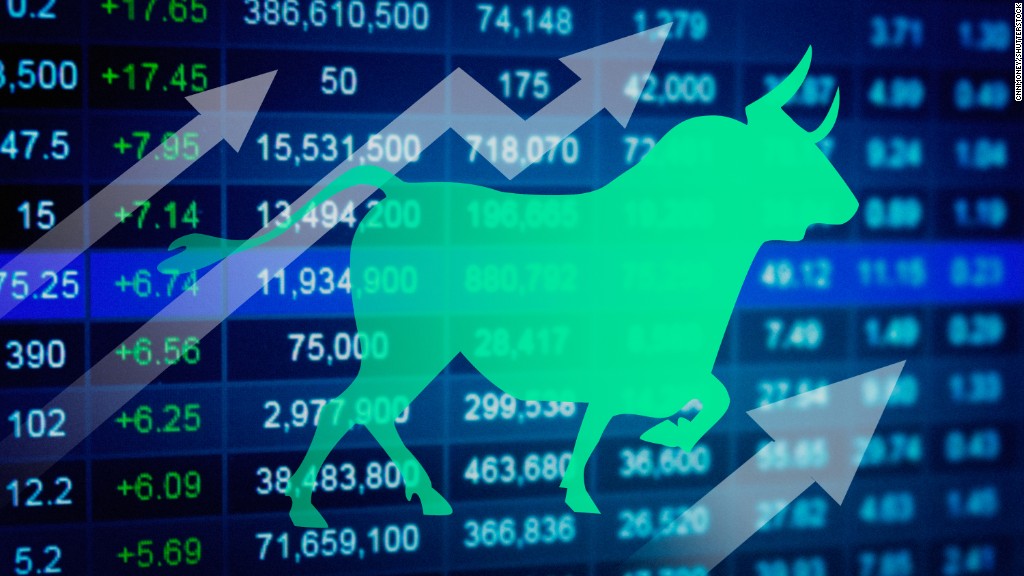
President Trump's first report card from Wall Street is out, and the results should leave investors of all political stripes smiling.
Despite recent turbulence in the stock market, the major indexes are wrapping up the first quarter on a positive note. The Dow gained nearly 5% during the three months of the year, while the Nasdaq is on track for a 10% jump, its best quarter since late 2013.
Wall Street also celebrated several milestones: The Dow crossed both the 20,000 and 21,000 levels for the first time, and the bull market turned eight years old.
All that is despite Trump's failure to repeal and replace Obamacare, a stumble that has raised doubts about his ability to push through the tax reform that has excited investors.
"Wall Street is still giving the administration the benefit of the doubt that they'll get something done on tax reform. The market has hung in there," said David Joy, chief market strategist at Ameriprise Financial.
Concerns about Washington drove the Dow last week to its first eight-day losing streak since 2011. But the slump was modest, and the Trump rally has since stabilized. After tipping into "extreme fear" mode last week, CNNMoney's Fear & Greed Index is back to "neutral."
If anything, the wearing off of Wall Street's post-election euphoria is a good thing for the long-term stability of the rally. Stocks have gotten more expensive in recent months because underlying earnings growth hasn't kept up with stock prices.
"I'm encouraged that the market hasn't continued to go straight up," Joy said. "That would be unhealthy."
Related: Here comes the best earnings season since 2011?
The first quarter showed how the Trump rally can be both streaky and calm.
In late February, the Dow closed at a record high for an incredible 12 days in a row. That has only happened two other times in the index's 120-year history.
Just weeks later, the Dow fell eight days in a row.
But market volatility remains low. The VIX volatility gauge is sitting at just 12, down from 22 right before the November election and north of 40 amid the turmoil of August 2015.
All told, there were only two days all quarter where the S&P 500 closed up or down by 1% or more. It was the calmest first quarter since 1972, according to the brokerage firm ConvergEx.
But will that continue? Don't bank on it.
ConvergEx chief market strategist Nicholas Colas told clients to get ready for "much higher" volatility, especially given an "unconventional president" who is having a "rocky start policy-wise."
Related: Trump's agenda is no slam dunk
While Wall Street took cues from Washington throughout the first quarter, there is reason to believe the focus will swing back to the fundamentals of the economy and earnings soon.
The key on the economic front will be whether the pop in optimism seen in consumer confidence gauges, CEO polls and small business surveys translates to actual spending.
The jury is out. While the Conference Board's consumer confidence sentiment has surged to the highest level since December 2000, Americans aren't exactly splurging. The Commerce Department said on Friday that consumer spending inched up by a paltry 0.1% in February from January.
The earnings picture looks brighter. First-quarter profits are expected to jump by a healthy 9.1% from the year before, according to FactSet. That kind of growth, the strongest since 2011, would help justify the recent advance in the stock market.
"Earnings are going to be extremely important," said Joy. "For this rally to persist -- or even hold at present levels -- you're going to need a pretty good first quarter earnings season."


